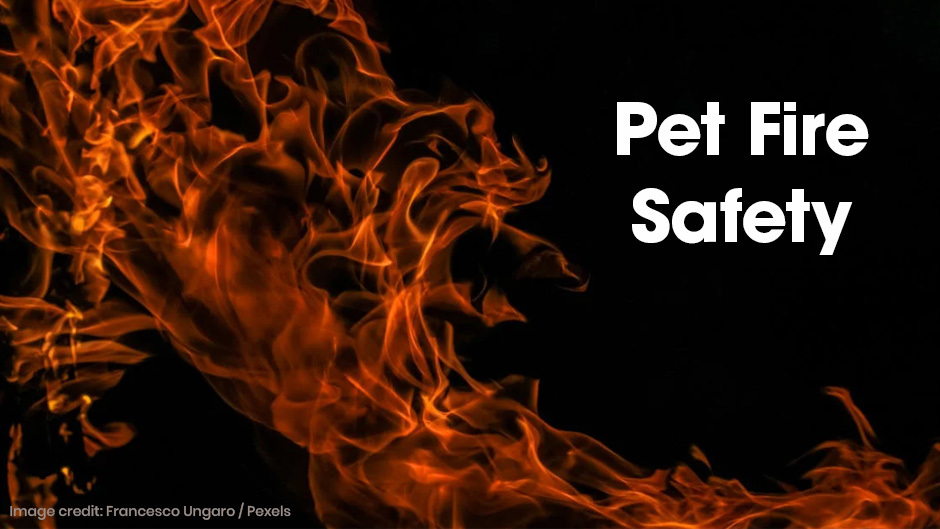Pets are a part of your family, and it’s essential to consider them when making emergency plans. July 15th is National Pet Fire Safety Day and the perfect opportunity to learn more about keeping your furry friends safe.
In this article, we’ll discuss some common fire dangers and what steps you can take to prepare your pet for an emergency.
Fire Dangers and Your Pet
Fire safety is a common household concern. However, when you have pets, there are additional fire hazards you should be aware of. Here are a few things to keep in mind when evaluating fire danger in your home.
- Open flames
Pets are curious creatures, and open flames can be enticing. Whether you have a lit candle or a roaring fireplace, it’s critical to keep pets at a safe distance to prevent accidental injury.
Never leave an open flame unattended, and keep candles out of your pet’s reach. Wagging tails and curious paws have been known to knock over lit candles and cause a fire. You may also want to consider a barrier to keep pets from getting too close to the fireplace.
- Stove Knobs
Does your cat enjoy playing with knobs? If you have a stovetop with knobs, this can be a potential fire danger. A cat looking for a new toy or a dog jumping up on the counter can accidentally hit a knob and turn the stove on. Not only can this cause injury to your pet, but it can also ignite items left on the stove and become a serious fire danger.
Because of this, it’s best to keep pets out of the kitchen when possible and consider putting covers on your stove knobs.
- Electrical Wires
Many pets chew on things they’re not supposed to and can cause damage to items in your home. Unfortunately, this can be a potential fire hazard when it comes to electrical wires.
Damaged wires can spark a fire and are an electrocution risk for your pet. To prevent this from happening, keep electrical wires out of reach. Furniture can be used to block access to electrical outlets, and protective covers are available to create an additional barrier between electrical wires and your pet.
Creating an Emergency Plan
While you can take certain precautions to reduce the fire risk in your home, emergencies can happen at any time. Creating an emergency plan can help you prepare and improve the chances of getting out safely. When creating your family emergency plan, remember to include your pets. Consider assigning a specific family member to gather the pets and get them out of the house safely. This can help ensure your furry friends won’t be overlooked.
Another essential part of your emergency plan is creating an emergency kit. When a fire occurs, you don’t want to waste precious time gathering food and supplies your pet may need. Put together a bag that contains your pet’s essentials, including food, bowls, medication, and leashes. You can also add a copy of your pet’s medical record and vaccine history.
Final Thoughts
Fires happen every day and can have serious consequences for the people and pets you love. We hope these tips have provided some new insight into pet fire safety and how to make sure you are prepared. If you have additional questions or concerns about fire safety and your pet, please give us a call. Our team is here to answer your questions and help you create a safe environment for your furry friends.

